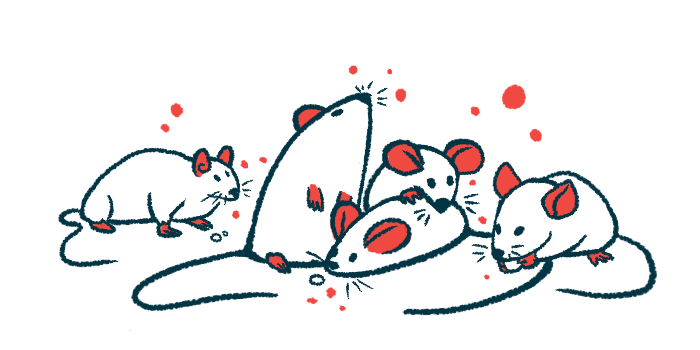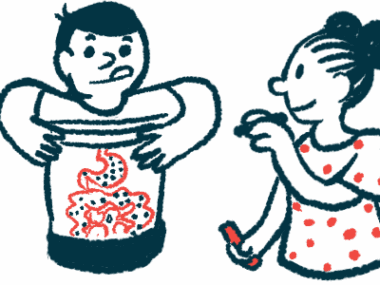High-fat diet may not be helping CF patients, mouse study suggests
CF mice fail to take up fats into droplets, which limits normal growth
Written by |

Mice mimicking cystic fibrosis (CF) have trouble forming and taking up fat droplets, which limits normal growth and optimal nutrition, a study found, suggesting that a high-fat diet may not be helping patients as much as thought and needs to be reconsidered.
According to the researchers, a key finding of this work is that the bodily processes underlying the nutritional and growth deficits commonly seen in people with CF may be misunderstood.
“These [findings] suggest that the ultrahigh-fat diet that most people with CF are counseled to follow may instead make [certain digestive] defects worse,” the team wrote, noting the possibility of “alternative nutritional therapy.”
The study, “Impaired intestinal free fatty acid transport followed by chylomicron malformation, not pancreatic insufficiency, cause metabolic defects in cystic fibrosis,” was published in the Journal of Lipid Research.
Scientists investigate bodily processes in mice mimicking CF
CF is caused by mutations in the CFTR gene that result in no or faulty CFTR protein. This protein is important for controlling the movement of salt and water in and out of cells. When it’s faulty or missing, thick mucus builds up, causing CF symptoms.
When this sticky mucus accumulates in the pancreas, pancreatic digestive enzymes cannot move into the digestive tract. As a result, food cannot be broken down and taken up properly. In children, digestive symptoms often manifest early, leading to slow growth and poor nutrition.
Treatment usually involves providing the missing enzymes and recommending a high-fat diet to make up for inadequate absorption of fats. However, it’s not likely to restore lost growth. Steatorrhea, the excretion of an abnormal amount of fats with the feces, may occur despite treatment.
Now, a team of researchers in the U.S. questioned whether inadequate absorption of fats may be related to how the body forms chylomicrons, which are particles that carry fats through the blood after digestion in the small intestine.
“We hypothesized that defects in chylomicron production could explain why CF body weights and nutrition are so resistant to clinical treatments,” the team wrote.
They turned to a mouse model of CF to test their hypothesis.
We hypothesized that defects in [certain bodily processes] could explain why CF body weights and nutrition are so resistant to clinical treatments.
In this model, the two copies of the CFTR gene carry a G542X mutation, a class 1 mutation that results in a shorter CFTR protein that is unstable and gets rapidly degraded by cells. Compared with healthy mice, these CF mice weighed significantly less.
After the completion of a fatty meal, fatty acids and cholesterol enter the intestinal cells. Fatty acids are then assembled into triglycerides and packaged along with cholesterol and lipoproteins into chylomicrons, which later join the blood in circulation.
The CF mice had about the same amount of triglycerides and cholesterol in the blood as healthy mice. However, fatty acids didn’t move properly across the intestinal wall into the cells lining the small intestine. As a result, the CF mice formed smaller chylomicrons containing fewer triglycerides than normal.
The abnormal chylomicrons were cleared from the blood about 10 times faster than those of healthy mice. This is important because rapid clearance means that the body may have less access to fats from food.
Indeed, when given a bolus of olive oil, CF mice had fewer triglycerides in the blood than healthy mice, “consistent with an inability to absorb dietary fat,” the researchers wrote.
High-fat diet may actually worsen digestive defects in CF, per study
To confirm that fatty acids didn’t move properly across the intestinal wall, the researchers grew organoids from intestinal cells from CF and healthy mice. Lab-grown intestinal organoids are organ-like structures that mimic what happens in the small intestine, including how fats move through and how chylomicrons are formed.
Compared with healthy organoids, those from CF mice did not move fatty acids along the intestinal cells as well. This kept chylomicrons from forming fully, consistent with “small chylomicrons that do not provide sufficient dietary [fats] to the body after a meal,” the researchers wrote.
“People with CF are prone to steatorrhea,” the researchers wrote. “Therefore, a major focus of clinical care has been on reducing steatorrhea in these individuals and to replenish ‘lost’ dietary fat that could otherwise be absorbed to support growth and nutrition.”
However, these findings now suggest that what the researchers call “the ‘classic’ CF high-fat diet” may actually worsen steatorrhea by overloading the small intestine with fats.
According to the team, trouble forming chylomicrons may instead be “a new target for when developing nutritional guidelines and therapies in CF.”








